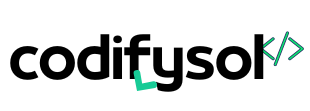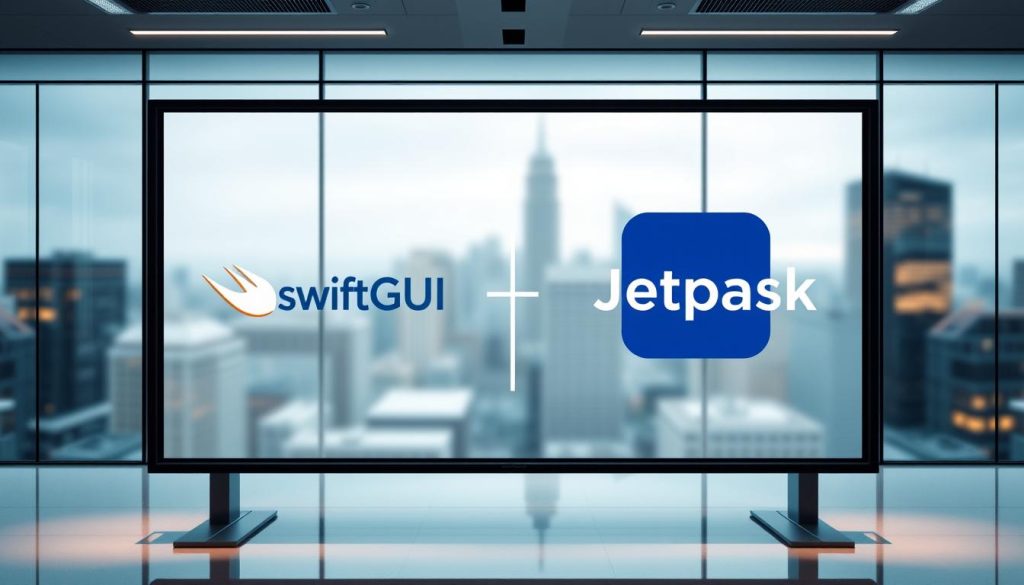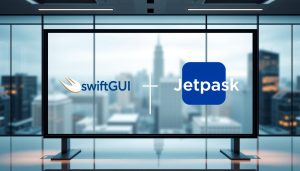The Fastest Growing Web Frameworks to Learn in 2025
As web development continues to evolve, staying updated with the latest JavaScript frameworks is crucial for developers to remain competitive.
The landscape of web development is constantly changing, with new frameworks emerging to address the needs of modern web applications. Understanding these frameworks is key to building robust, scalable, and efficient web applications.

With the demand for skilled web developers on the rise, being proficient in the latest JavaScript frameworks can significantly enhance career prospects.
Key Takeaways
- Understanding the importance of staying updated with the latest web frameworks.
- Identifying the most promising JavaScript frameworks for 2025.
- Learning how to leverage these frameworks for building modern web applications.
- Enhancing career prospects through proficiency in web development.
- Staying ahead in the competitive landscape of web development.
The Evolving Landscape of Web Development
In 2025, the web development scene is expected to be shaped by innovative frameworks, AI, and automation, changing how developers build and deploy applications. The importance of staying ahead of the curve in web development cannot be overstated, as it directly impacts the success of digital projects.
Why Frameworks Matter in Modern Development
Frameworks are the backbone of modern web development, providing the necessary structure and tools to build complex web applications efficiently. They enable developers to focus on the core functionality of their projects, rather than reinventing the wheel. As web development continues to evolve, the role of frameworks becomes increasingly crucial.
“Frameworks are essential for building scalable, maintainable, and efficient web applications,” says a leading industry expert. This underscores the significance of selecting the right framework for a project.
The Impact of AI and Automation on Framework Selection
The integration of AI and automation in web development is transforming the way frameworks are chosen and utilized. AI-driven tools can now predict and optimize framework performance, while automation simplifies the development process, making it faster and more reliable.
- AI-powered predictive analytics for framework performance
- Automation in testing and deployment processes
- Enhanced developer productivity through AI-assisted coding tools
Key Factors Driving Framework Adoption in 2025
Several factors will drive the adoption of web frameworks in 2025, including the need for improved performance, enhanced security features, and better support for emerging technologies like AR and VR. As the web development landscape continues to evolve, frameworks that can adapt to these changes will be in high demand.
By understanding these trends and factors, developers can make informed decisions about which frameworks to adopt, ensuring they remain competitive in the ever-changing world of web development.
The Fastest Growing Web Frameworks to Learn in 2025
In the ever-changing world of software development, pinpointing the fastest-growing web frameworks can make all the difference for developers in 2025. As the demand for efficient, scalable, and secure web applications continues to rise, understanding the most promising frameworks is crucial.
Selection Criteria for This List
To identify the fastest-growing web frameworks, we considered several key factors. These include industry adoption rates, community support, and innovation in solving real-world problems. Our selection is based on a comprehensive analysis of current trends and future projections in the software development landscape.
The frameworks listed have demonstrated significant growth and potential for continued adoption in 2025. According to industry expert,
“The future of web development lies in frameworks that offer a balance between performance, scalability, and developer experience.”
Growth Metrics and Industry Adoption Rates
To measure the growth of web frameworks, we looked at metrics such as GitHub stars, npm downloads, and Stack Overflow discussions. These indicators provide insight into the popularity and community engagement around each framework.
| Framework | GitHub Stars | npm Downloads (Monthly) |
|---|---|---|
| React | 180k+ | 15M+ |
| Angular | 40k+ | 2M+ |
| Vue.js | 30k+ | 1.5M+ |
How to Evaluate Framework Longevity
Evaluating the long-term viability of a web framework involves assessing its backing by major companies, regular updates, and adaptability to emerging technologies. Developers should consider these factors when choosing a framework for their projects.
By understanding the criteria used to select the fastest-growing web frameworks and how to evaluate their longevity, developers can make informed decisions about which technologies to invest their time in. This knowledge is crucial for staying competitive in the rapidly evolving landscape of software development.
Next-Generation JavaScript Frameworks
As we dive into 2025, the JavaScript ecosystem is witnessing the rise of next-generation frameworks that promise enhanced performance and developer experience. These frameworks are designed to address the limitations of their predecessors while introducing innovative features that simplify web development.
Svelte and SvelteKit
Svelte has gained significant traction due to its compiler-first approach, which shifts much of the work from the browser to the compile step, resulting in highly optimized vanilla JavaScript.
Compiler-First Approach and Performance Benefits
Svelte’s compiler-first approach eliminates the need for a virtual DOM, reducing memory usage and improving runtime performance. This results in faster and more efficient applications.
Learning Curve and Community Support
SvelteKit, built on top of Svelte, provides a comprehensive framework for building applications, including features like server-side rendering and static site generation. The Svelte community is known for its active support and extensive documentation, making it easier for newcomers to learn.
Qwik
Qwik is another framework gaining attention for its unique approach to improving web performance.
Resumability vs. Hydration Model
Qwik introduces the concept of resumability, allowing applications to resume execution from where they left off without requiring a full hydration process, significantly improving startup times.
Integration with Builder.io Ecosystem
Qwik’s integration with the Builder.io ecosystem provides developers with a powerful toolset for building and managing high-performance web applications.
Solid.js
Solid.js is a reactive JavaScript framework that offers a fine-grained reactivity system, enabling precise updates to the DOM without the overhead of a virtual DOM.
Fine-Grained Reactivity System
Solid.js’s reactivity system ensures that only the components that depend on the changed state are updated, resulting in efficient and targeted updates.
Performance Advantages Over React
Compared to React, Solid.js offers better performance due to its lack of a virtual DOM and its ability to update the DOM directly, making it an attractive option for developers seeking high performance.
The following table summarizes the key features and benefits of these next-generation JavaScript frameworks:
| Framework | Key Feature | Performance Benefit |
|---|---|---|
| Svelte | Compiler-First Approach | Highly Optimized JavaScript |
| Qwik | Resumability | Faster Startup Times |
| Solid.js | Fine-Grained Reactivity | Efficient DOM Updates |
Full-Stack Frameworks Gaining Momentum
In the rapidly changing world of web development, full-stack frameworks are emerging as key players, offering a range of benefits for developers. These frameworks are designed to simplify the development process by providing a comprehensive set of tools for building robust, scalable web applications.
Next.js
Next.js has gained significant traction in the web development community due to its innovative features and robust performance. Two of its standout features are Server Components and Streaming Architecture, and App Router and Data Fetching Patterns.
Server Components and Streaming Architecture
Next.js introduces Server Components, which allow for rendering React components on the server, improving performance and SEO. Its Streaming Architecture enables faster page loads by streaming content to the client as it becomes available.
App Router and Data Fetching Patterns
The App Router in Next.js simplifies client-side and server-side routing, making it easier to manage complex application structures. Additionally, its data fetching patterns allow developers to fetch data on the server or client-side efficiently, enhancing flexibility and performance.
Remix
Remix is another full-stack framework gaining popularity, known for its focus on nested routing and progressive enhancement. These features enable developers to build resilient, fast web applications.
Nested Routing and Progressive Enhancement
Remix’s nested routing allows for more intuitive and organized routing, making complex applications easier to manage. Its support for progressive enhancement ensures that applications are functional even with limited JavaScript, enhancing user experience.
Server-First Architecture and Form Handling
Remix adopts a server-first architecture, prioritizing server-side rendering and handling, which improves initial load times and SEO. It also simplifies form handling, making it easier to manage complex form interactions.
Astro
Astro is a relatively new entrant in the full-stack framework landscape, focusing on island architecture for content-focused sites. This approach allows for faster rendering by only hydrating components that need interactivity.
Island Architecture for Content-Focused Sites
Astro’s island architecture enables developers to build fast, content-rich websites by selectively hydrating components, thus improving performance and reducing unnecessary JavaScript execution.
View-Agnostic Component Model
Astro’s view-agnostic component model allows developers to use components from various frameworks, promoting flexibility and interoperability in development projects.
Here’s a comparison of these frameworks based on key features:
| Framework | Key Features | Use Cases |
|---|---|---|
| Next.js | Server Components, Streaming Architecture, App Router | Complex web applications, E-commerce sites |
| Remix | Nested Routing, Progressive Enhancement, Server-First Architecture | Data-driven applications, Complex form handling |
| Astro | Island Architecture, View-Agnostic Component Model | Content-focused sites, Blogs, Marketing sites |

As web development continues to evolve, these full-stack frameworks are poised to play a significant role in shaping the future of web applications. By understanding their strengths and use cases, developers can make informed decisions about which frameworks to adopt for their projects.
Backend and API Frameworks on the Rise
In 2025, backend and API frameworks are becoming increasingly crucial for modern web applications. As developers seek more efficient, scalable, and secure solutions, certain frameworks are gaining significant traction.
Fastify
Fastify is emerging as a high-performance alternative to traditional frameworks like Express. Its design focuses on providing a more efficient and scalable architecture.
Performance Advantages over Express
Fastify offers several performance advantages, including:
- Faster request handling
- Improved error handling mechanisms
- Enhanced support for async/await operations
Schema Validation and Plugin Ecosystem
Fastify’s robust schema validation ensures data integrity, while its extensive plugin ecosystem allows developers to extend functionality easily.
NestJS
NestJS is gaining popularity for its ability to build enterprise-ready applications. It combines elements of Object-Oriented Programming, Functional Programming, and Functional Reactive Programming.
TypeScript Integration and Dependency Injection
NestJS provides seamless integration with TypeScript, enhancing code maintainability and scalability. Its dependency injection system promotes loose coupling and testability.
Enterprise-Ready Features and Microservices Support
NestJS is designed with enterprise needs in mind, offering features like microservices support, robust security, and extensive configuration options.
Hono
Hono is a lightweight, fast, and secure framework optimized for edge computing environments. It’s designed to be highly adaptable and performant.
Edge Computing Optimization
Hono is built with edge computing in mind, providing optimized performance in distributed environments.
Middleware System and TypeScript Support
Hono features a flexible middleware system and supports TypeScript out of the box, making it a versatile choice for developers.
As the web development landscape continues to evolve, frameworks like Fastify, NestJS, and Hono are poised to play significant roles in shaping the future of backend and API development.
Mobile and Cross-Platform Frameworks
As mobile development continues to evolve, cross-platform frameworks have become essential tools for developers. These frameworks enable the creation of applications that run seamlessly across multiple platforms, reducing development time and costs.
Flutter
Flutter has gained significant popularity due to its hot reload feature, which allows developers to see changes in real-time without recompiling the entire application. This feature significantly enhances developer productivity and streamlines the development process.
Dart Language Advantages and Hot Reload
The Dart language, used by Flutter, offers several advantages, including:
- Fast compilation to native code
- Garbage collection for efficient memory management
- Optional type annotations for flexibility
Hot reload allows developers to quickly experiment, iterate, and debug their applications, making it a powerful tool for enhancing developer skills.
Material Design and Cupertino Widget Libraries
Flutter provides comprehensive widget libraries for both Material Design (Android) and Cupertino (iOS), ensuring that applications have a native look and feel on both platforms. This consistency in UI is crucial for delivering a high-quality user experience.
React Native
React Native is another popular framework that allows developers to build native mobile applications using React. Its new architecture improves performance and simplifies the integration of native modules.
New Architecture and Fabric Renderer
The new architecture in React Native introduces the Fabric renderer, which enhances the rendering engine and provides a more seamless integration with native components. This results in faster and more responsive applications.
Integration with React Ecosystem
One of the key advantages of React Native is its tight integration with the React ecosystem, allowing developers to leverage their existing knowledge and tools. This ecosystem integration is a significant boost to productivity and coding efficiency.
Tauri
Tauri is a relatively new framework that allows developers to build lightweight, secure desktop applications using web technologies. Its Rust-powered performance ensures that applications are not only fast but also secure.
Rust-Powered Performance and Security
Tauri leverages Rust for its core functionality, providing memory safety guarantees and high performance. This makes Tauri an attractive choice for developers looking to build secure desktop applications.
Smaller Bundle Sizes and Native OS Integration
Tauri applications are known for their small bundle sizes, making distribution and updates more efficient. Additionally, Tauri provides a high degree of native OS integration, allowing applications to blend in with the native environment.
In conclusion, cross-platform frameworks like Flutter, React Native, and Tauri are revolutionizing mobile and desktop application development. By enhancing developer skills and improving coding efficiency, these frameworks are set to continue their growth trajectory in the coming years.
Emerging Frameworks to Watch
In the rapidly evolving landscape of web development, certain emerging frameworks are poised to make significant impacts in 2025. As developers look for innovative solutions to enhance their projects, understanding these frameworks is crucial.
Deno Fresh
Deno Fresh is gaining attention for its unique features, including its islands architecture and zero JavaScript by default, making it an attractive option for developers seeking optimized performance.
Islands Architecture and Zero JavaScript by Default
The islands architecture allows for selective hydration, enhancing performance by reducing unnecessary JavaScript. This approach enables developers to create fast, efficient web applications.
TypeScript and JSX Support
Deno Fresh also supports TypeScript and JSX, providing developers with the flexibility to use familiar syntax and tools, thus streamlining the development process.
Lit
Lit is another emerging framework that leverages web components and reactive controllers to build efficient, lightweight applications.
Web Components and Reactive Controllers
By utilizing web components, Lit enables the creation of reusable, encapsulated custom elements. Reactive controllers in Lit facilitate the management of complex application states.
Small Footprint and Browser Compatibility
Lit’s small footprint ensures that applications remain lightweight, while its focus on browser compatibility guarantees seamless functionality across different browsers.
Bun’s Framework Ecosystem
Bun’s framework ecosystem is emerging as a significant player, driven by its high-performance JavaScript runtime and integrated tooling.
JavaScript Runtime Performance
Bun’s JavaScript runtime is designed for high performance, enabling faster execution of JavaScript code and thus improving overall application performance.
Integrated Tooling and Compatibility
The integrated tooling within Bun’s ecosystem simplifies development workflows, while its compatibility with existing JavaScript ecosystems ensures a smooth transition for developers.
These emerging frameworks offer innovative solutions that could shape the future of web development. As the landscape continues to evolve, keeping an eye on these frameworks will be essential for developers looking to stay ahead.
How to Choose the Right Framework for Your Projects
In the ever-evolving landscape of web development, picking the appropriate framework is key to achieving your project goals. Choosing the right framework involves several critical considerations.
Assessing Project Requirements and Constraints
Begin by evaluating your project’s specific needs, including scalability, performance, and security requirements. Consider the type of application you’re building and the expected user base.
Team Expertise and Learning Curve Considerations
Assess your team’s expertise and the learning curve associated with the framework. Opt for frameworks that align with your team’s skill set to minimize the onboarding time.
| Framework | Learning Curve | Team Expertise Required |
|---|---|---|
| React | Moderate | JavaScript, Component-based architecture |
| Angular | Steep | JavaScript, TypeScript, MVC architecture |
| Vue.js | Gentle | JavaScript, Component-based architecture |
Balancing Innovation with Stability
Balance the need for innovation with the requirement for stability. Evaluate the framework’s maturity and community support before making a decision.
Framework Interoperability Strategies
Consider the interoperability of the framework with other tools and technologies. Ensure that the chosen framework can seamlessly integrate with your existing tech stack.

Conclusion
As we navigate the ever-changing landscape of web development, understanding the fastest-growing web frameworks is crucial for developers to remain competitive. The frameworks discussed in this article represent the forefront of innovation in coding and developer skills.
To future-proof their skills, developers must stay informed about emerging trends and advancements in web frameworks. By doing so, they can leverage the latest tools and technologies to drive project success and enhance their professional growth.
Ultimately, the key to thriving in this dynamic environment lies in embracing a culture of continuous learning and adaptation. As web frameworks continue to evolve, developers who stay ahead of the curve will be best positioned to capitalize on new opportunities and drive innovation in the field.
FAQ
What are the fastest-growing web frameworks to learn in 2025?
The fastest-growing web frameworks to learn in 2025 include Svelte, Qwik, Solid.js, Next.js, Remix, Astro, Fastify, NestJS, Hono, Flutter, React Native, Tauri, Deno Fresh, Lit, and Bun.
Why is it important to stay updated with the latest web frameworks?
Staying updated with the latest web frameworks is crucial for developers to remain competitive, adapt to changing project requirements, and leverage the latest features and performance improvements.
How do I choose the right framework for my project?
To choose the right framework, assess your project requirements and constraints, consider your team’s expertise and the learning curve, balance the need for innovation with stability, and plan for framework interoperability.
What are the key factors driving framework adoption in 2025?
The key factors driving framework adoption in 2025 include the influence of AI and automation, performance advantages, community support, and the need for enterprise-ready features and edge computing optimization.
What is the difference between Svelte and React?
Svelte is a compiler-first framework that offers performance benefits and a simpler learning curve, whereas React is a library that relies on a virtual DOM and has a larger ecosystem.
How does Qwik’s resumability feature improve performance?
Qwik’s resumability feature allows for faster page loads and improved performance by enabling the framework to resume execution from a previous state, reducing the need for hydration.
What are the benefits of using Next.js for full-stack development?
Next.js offers benefits such as server components, streaming architecture, and an app router, making it suitable for complex full-stack applications.
Can I use multiple frameworks together in a project?
Yes, it is possible to use multiple frameworks together in a project, but it requires careful planning and consideration of framework interoperability strategies.
What are the advantages of using a framework like Astro for content-focused sites?
Astro’s island architecture is optimized for content-focused sites, offering improved performance and a view-agnostic component model.
How does Bun’s JavaScript runtime performance compare to other frameworks?
Bun’s JavaScript runtime performance is designed to be highly optimized, offering fast execution and integrated tooling.








